Product Description
Ultrapak cord is made of 100% cotton, knitted into thousands of tiny loops to form long, interlocking chains. This unique knitted design exerts a gentle, continuous outward force following placement, as the knitted loops seek to open. Optimal tissue displacement occurs in 5 minutes. Ultrapak E knitted cord is impregnated with racemic epinephrine hydrochloride.
The original—and smallest—knitted cord
Provides rapid tissue displacement, detailed margins, and quality impressions
Facilitates easy packing and stays placed better than any twisted or braided cord
Compresses upon packing then expands for optimal retraction
Does not entangle in diamond bur
Bright colors facilitate easy location and removal
Available with or without epinephrine*
High carbon steel blade ensures a clean cut
Thin plastic gate prevents cord from falling into the bottle upon cutting
Ruler printed on label provides easy cord measurement
*Note: Do not use Ultrapak E knitted cord or other epinephrine preparations with ferric sulfate solutions, including ViscoStat™, Astringedent™, and Astringedent™ X hemostatics, as a blue/black precipitate will occur. Ultrapak cord with Epinephrine is not available in all countries.
Technical Details
The World’s Smallest Knitted Cord
Knitting a cord small enough to fit into the sulcus was no easy task. In fact, it took 9 months to knit the first 1 inch of the size #0 cord. Once we had learned the best methods and techniques to knit Ultrapak cord’s microscopic loops, we learned we could make even smaller cords—all the way to size #000, the smallest knitted retraction cord in the world.
Knitted, Not Braided or Twisted
Prior to Ultrapak cord, all retraction cords were either twisted or braided. When the clinician tries to pack a twisted cord with a packing instrument, the instrument slips between the fibers of the cord. Braided cord elimintated that problem, but a braided cord is very rigid, which makes packing into the sulcus challenging. Knitted cords are flexible and allow for easy packing with an instrument. The microscopic compressible loops of the knitted cord afford greater interthread space than braided cord. Upon packing, the loops compress and express hemostatic astringent to underlying tissues. As loops open, a gentle, continuous outward force is exerted. A knitted cord is like a chain; it bends and stays put when packed into place.
6 Sizes
Ultrapak knitted cord comes in cords as small as size #000 to as large as size #3, making Ultrapak cord suitable for any clinical situation. The smaller cords are ideal for pediatric cases where carious lesions have extended beyond the gumline and as the first cord in the double-cord technique. The larger cords work well as the upper cord in the double-cord technique and for areas that have thick gingival tissues that require a significant amount of force to be retracted.
Uses
#000
- Use as lower cord in the double-cord technique
- Anterior teeth
- Double packing
#00
- Preparing and cementing veneers
- Restorative procedures dealing with thin, friable tissues
#0
- Lower anteriors
- When luting near gingival and subgingival veneers
- Class III, IV, and V restorations
- Second cord for double-cord technique
#1
- Non-impregnated #1 and #2 sizes are particularly effective for tissue control and/or displacement when soaked in coagulative hemostatic solution prior to and/or after crown preparations
- Use as a protective pre-preparation cord on anteriors
#2
- Upper cord for double-cord technique
- Use as a protective pre-preparation cord
#3
- Areas that have fairly thick gingival tissues where a significant amount of force is required
- Upper cord for use with the double-cord technique
Clinicals
Rapid Tissue Displacement

Ultrapak cord compresses upon packing and then expands for optimal tissue displacement.

Ultrapak cord, saturated with ViscoStat hemostatic solution, controls bleeding and sulcular fluid near gingival and subgingival preparations.
Ultrapak CleanCut
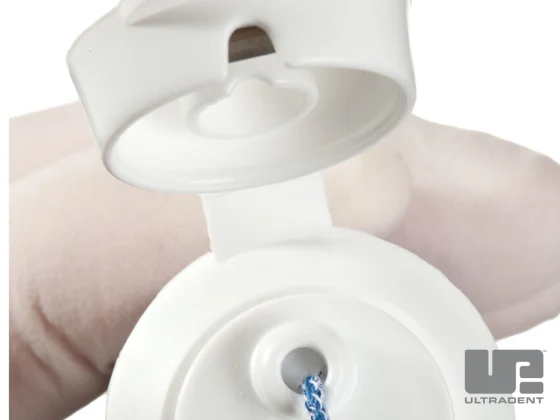
Ultrapak CleanCut design features a blade in the cap for efficient cutting. A special dispensing orifice prevents cord from falling into the bottle.
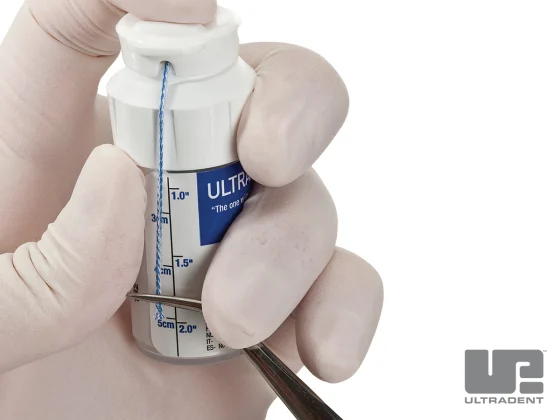
Ruler printed on label provides easy cord measurement.
The One with the Stripe!™

With easy packing, excellent absorption, and exceptional retention, the proprietary knitted design of the Ultrapak cord has been the preferred choice for years.
Videos
https://youtu.be/vm52iReD8fQhttps://youtu.be/-LMAAYHLpMw
Procedures
Pre-Preparation Packing Technique
See Instructions for Use for complete instructions, warnings, and precautions.
Step 1
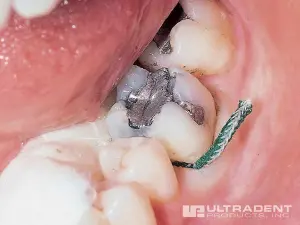
PREPACK. To ensure cord retention during preparation, use a cord large enough to firmly compress into sulcus. Open proximal contacts and place Ultrapak knitted cord soaked in hemostatic solution. Because Ultrapak cord compresses upon packing, use a cord size that appears too large. The thin Ultrapak™ Packer packing instrument quickly slips cord into position. The knitted cord’s unique design (interlocking loops) facilitates easy packing and locks it into place.
Step 2
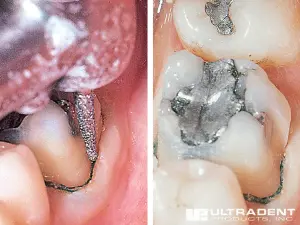
PREPARATION. Extend margin subgingivally by cutting partway into knitted cord, which won’t entangle in the diamond bur. Remove remnant of cord with calcium hydroxide applicator (tiny ball end). Bleeding is minimal. A small portion of uncut tooth above the gingival attachment is preserved to record in the impression.
Step 3

Double-Cord Technique
See Instructions for Use for complete instructions, warnings, and precautions.
Step 1
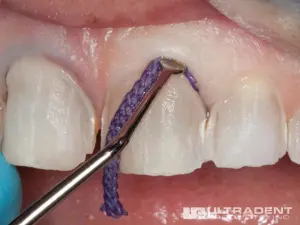
The most common challenges in getting a quality impression are adequate tissue retraction and sufficient moisture control. Try a double retraction cord technique combined with effective hemostatic agents to alleviate both.
FIRST CORD. Once hemostasis is achieved, carefully place a single cord–such as Ultrapak cord #00–as deep as possible into the sulcus. Use Fischer’s Ultrapak™ Packers packing instruments to place cords properly and efficiently.
Step 2

SECOND CORD. Place a second, thicker cord soaked in a hemostatic agent to expand the tissue laterally.
Step 3
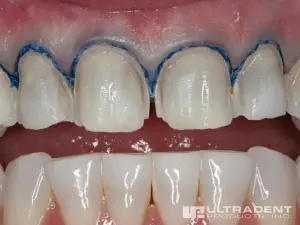
RINSE/DRY. Rinse the area well and lightly dry.

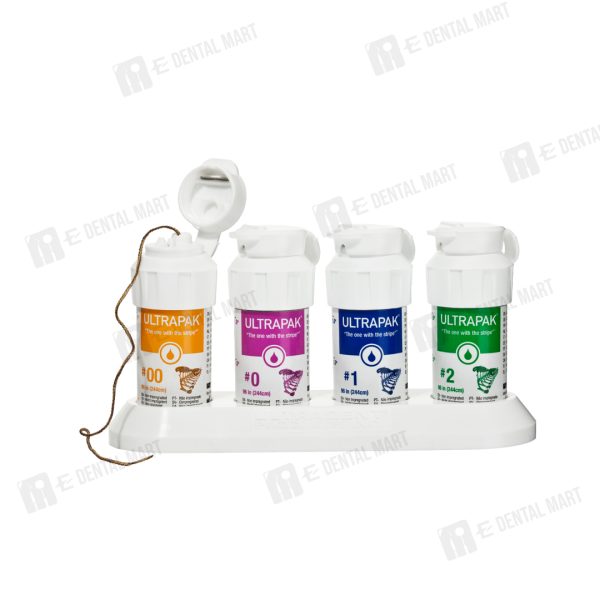

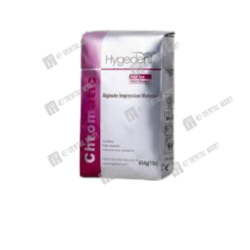
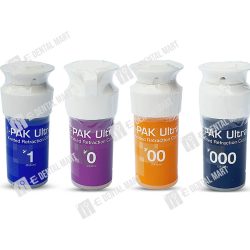



Reviews
There are no reviews yet.